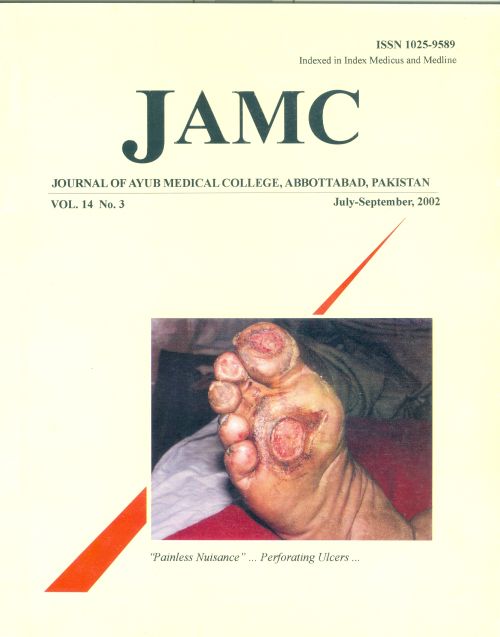COMPUTER SKILLS AMONG MEDICAL LEARNERS: A SURVEY AT KING ABDUL AZIZ UNIVERSITY, JEDDAH
Abstract
Background: We conducted a survey at King Abdul Aziz University to assess computer and Internet related activities, needs, and attitudes of our medical students towards computer assisted medical learning. Methods: A questionnaire containing 16 questions was distributed among medical students. The question form was prepared to assess the computer skills among students and their involvement in computer and Internet assisted medical and clinical learning activities. Each question was followed by a four or five points containing Likert-type multiple choice answer. Results: A total of 303 medical member of the university filled the forms. Among them majorities were medical students constituting 247 (81.5%), 10 (3.3%) were interns, 9 (3%) residents and 36 (11.9%) were senior residents. 55% of the responders were male and 45% were females. The most important points with their brief responses are: Computer skills: 6.3% Not aware; 93.7% Aware. Purpose of using computer: Personal 62.5%; Professional 15%; Academic 21.9%. Software(s) used: MS office 9.4%; MS Office and Internet 31.3%; MS Office, Internet and any medical software 37%; No software 21%. Connecting to Internet or Email: Not at all 18 %; Rarely 18%; Once a week 15%; Every alternate day 25%; Daily 12.5%; Multiple times a day 9.4%. Use of Internet for medical learning: Not at all 22%; Very rarely 22%; Some times 41%; Regularly 15%. Computers and Internet can improve studies and professional skills: No not at all 6%; Yes, to some extent 41%; Yes, too much 53%. Conclusion: The use of modern computer and Internet technology will result in more effective medical education. Expansion of computer-assisted learning requires careful strategic planning, resource sharing, staff incentives, and active promotion of multidisciplinary working and effective quality control.
Keywords: Computer skills among medical students, computer assisted learning, Continuous medical education CME.
References
Greenhalgh T. Computer assisted learning in undergraduate medical education. BMJ 2001; 322: 40-44.
Phillips R. Developers' guide to interactive multimedia. A methodology for educational applications. Perth: Curtin University Press, 1996, p 233-240.
Trotto P. A benchmark study of physicians' use of the world wide web. Chicago, IL: American Medical Association, 1998. p 20-27.
Haag M, Maylein L, Leven FJ, Tonshoff B, Haux R. Web-based training: a new paradigm in computer-assisted instruction in medicine. Int J Med Informatics 1999; 53: 79-90.
Lacher D, Nelson E, Bylsma W, Spena R. Computer Use and Needs of Internists: A Survey of Members of the American College of Physicians-American Society of Internal Medicine DSW, Medical Marketing and Media, October 1998, p 65-69.
Downloads
How to Cite
Issue
Section
License
Journal of Ayub Medical College, Abbottabad is an OPEN ACCESS JOURNAL which means that all content is FREELY available without charge to all users whether registered with the journal or not. The work published by J Ayub Med Coll Abbottabad is licensed and distributed under the creative commons License CC BY ND Attribution-NoDerivs. Material printed in this journal is OPEN to access, and are FREE for use in academic and research work with proper citation. J Ayub Med Coll Abbottabad accepts only original material for publication with the understanding that except for abstracts, no part of the data has been published or will be submitted for publication elsewhere before appearing in J Ayub Med Coll Abbottabad. The Editorial Board of J Ayub Med Coll Abbottabad makes every effort to ensure the accuracy and authenticity of material printed in J Ayub Med Coll Abbottabad. However, conclusions and statements expressed are views of the authors and do not reflect the opinion/policy of J Ayub Med Coll Abbottabad or the Editorial Board.
USERS are allowed to read, download, copy, distribute, print, search, or link to the full texts of the articles, or use them for any other lawful purpose, without asking prior permission from the publisher or the author. This is in accordance with the BOAI definition of open access.
AUTHORS retain the rights of free downloading/unlimited e-print of full text and sharing/disseminating the article without any restriction, by any means including twitter, scholarly collaboration networks such as ResearchGate, Academia.eu, and social media sites such as Twitter, LinkedIn, Google Scholar and any other professional or academic networking site.










